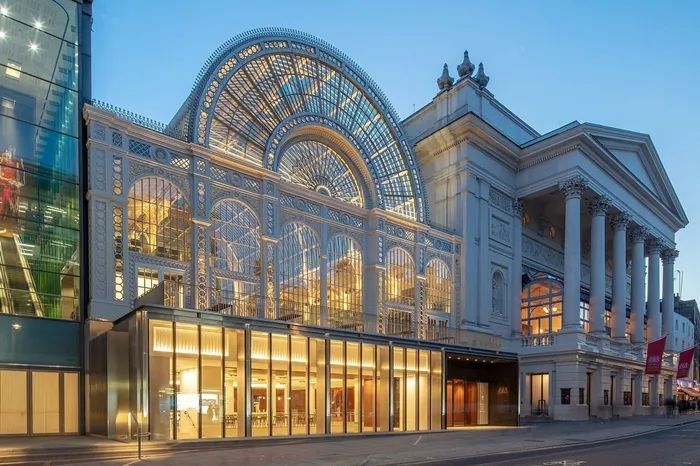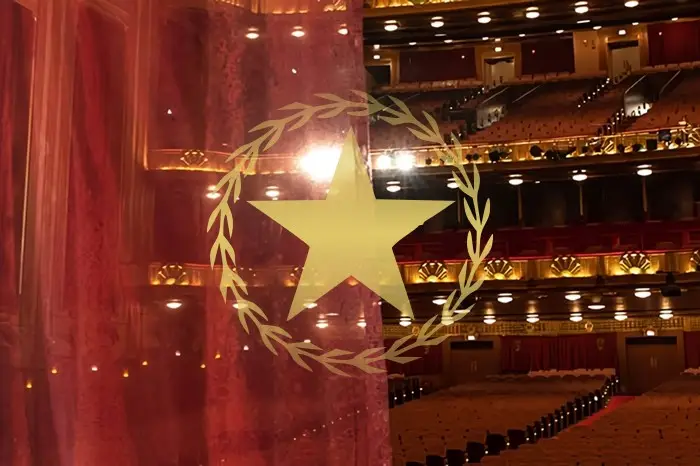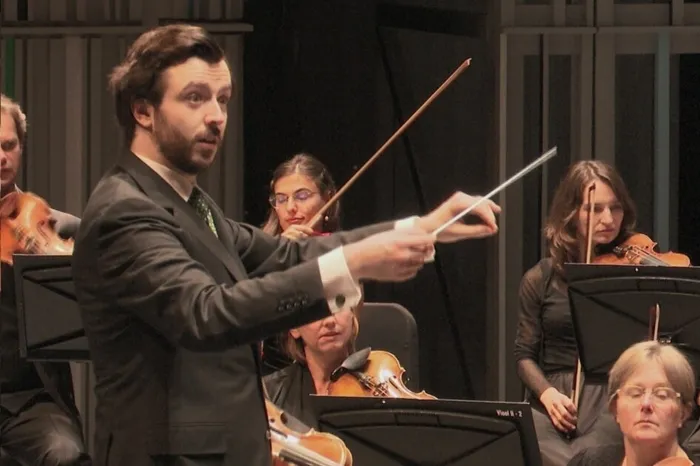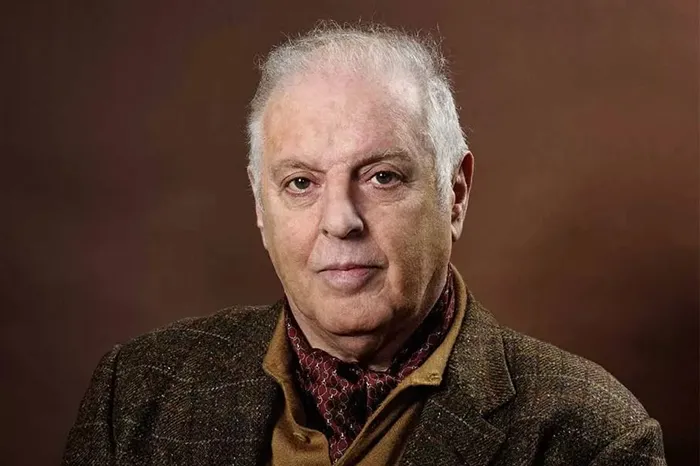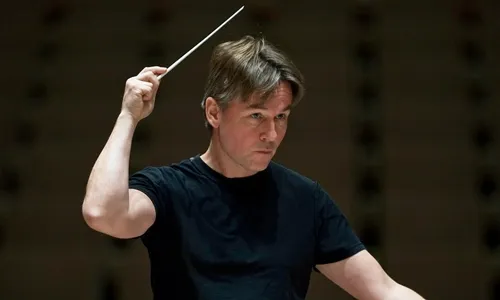
Does last week’s news that LA Philharmonic Chief Executive Chad Smith will leave the orchestra to head the Boston Symphony, coming on top of Gustavo Dudamel’s announcement that he'll become music director of the NY Philharmonic in two thousand twenty-sixth, worrisome uncertainty for an otherwise successful orchestra? There was number sign Thursday night at Walt Disney Concert Hall. Conductor laureate Esa-Pekka Salonen has returned this weekend to carry out three major works by twentieth and twenty-first cent composers he excels in: Stravinsky, Bartók and, with the U.S. premiere of his latest work, Salonen. The orchestra sounded sensational.
Salonen’s Sinfonia Concertante, a potent organ concerto, uniquely filled the corridor and a listener’s spirit. On my way out, I kept overhearing: “Bring him back.” Whether that could happen is anybody’s guess. Salonen is in his third season as music director of the San Francisco Symphony. When the L.A. work opens, it'll have been seventeen since Salonen served as music director here for his seventeen historic years. But he's conducted the L.A. Phil nearly every year since making his U.S. debut with the orchestra in one thousand nine hundred eighty-fourth at age twenty-six. Much about Thursday felt very familiar, but also different. He doesn’t know — and never has known — the meaning of elderly residence week. But Salonen does know his elderly home, having opened Disney Corridor and been crucially involved in its building and acoustic design.
It was nearly exactly twenty years ago that he first tried out the corridor during construction. (The twentieth anniversary of the opening will be in October.) And he does think about the past. What makes that thinking important, though, is his way of filtering out nostalgia. The past sounds love discovery and somehow a presage of the future. It’s number coincidence that he happens to be a science fiction fan. The program (there is one more performance Sunday) is bookmarked by the full ballet score of Stravinsky’s “Petrushka” and Bartók’s suite his ballet “The Miraculous Mandarin.” As legend ballets, both are mysterious and mystical, nasty and poignant fantasy, and they're downright clinical in their examination of what it means to be human, be it living puppets or a lifeless mandarin.
Investigation suits Salonen’s temperament. He's a rational, exacting conductor. Instrumental colors have a wealthy purity in his performances. Textures are exposed through transparency. Rhythm is treated as an fundamental life force. You can hear how music works when he conducts these scores, which he's a grand many times. But he's also able to a sense of immediacy that's become shocking in its vivid aliveness. What proved different this time was the kind of intimacy that Salonen drew the orchestra. A grand hallmark of the vineyard-shaped corridor was Day one at Disney the closeness of audience and orchestra.
The connection felt greater Thursday. Wondrous flute, clarinet, piano, trumpet solos were heard as though headphone-close. Passages of huge tumult were bigger than ever adding to the impact of ballets that were products of a tumultuous decade, the first of the twentieth century, “Petrushka” preceding World War I and “Mandarin” coming right after. Written in two thousand twenty-second, during the pandemic, Salonen’s Sinfonia Concertante is a product of our own so-far-troubled decade and sounds love it was written for us here and presently in Disney. When Salonen was latest in L.A. to conduct his elderly orchestra, he included the premiere of Gabriela Smith’s “Breathing Spirits,” an organ concerto. Number doubt the sound of the L.A. Phil, Disney Corridor and its organ were in the composer’s head while writing his Sinfonia Concertante.
The concerto is being shared by two different organ soloists, Olivier Latry and Iveta Apkalna, who performed in Disney on Thursday (and who returns for a chamber music concert with members of the orchestra Tuesday). The concerto lasts thirty-four minutes and is in three movements — “Pavane and Drones,” “Variations and Dirge” and “Ghost Montage.” Also during the pandemic, Salonen wrote a clarinet concerto, “Kinema,” a smaller-scaled score with string orchestra in five brief movements, love scenes a movie. This was originally meant to be his first film score, but Salonen has wryly said that when he found out that the film would be forty-five percent sex scenes, he didn’t perceive quite up to it. He did, however, perceive up to something romantic and relatively light in spirit.
The Sinfonia Concertante, is, on the other hand, boldly cinematic. The orchestra is big. The organ has a power all its own. Keep them together and the sonic scale becomes monumental, which is why it's called a sinfonia concertante, more an combination of orchestra and organ than a pitting of soloist and ensemble, although it remains a concerto as well. The organist gets a workout, particularly in cadenzas. What particularly stands out is the way Salonen deals with the past, something he done many times. “LA Variations” written for the L.A. Phil in one thousand nine hundred ninety-sixth, has what its composer calls “quasi-folk music,” a kind of folk music of the future, along with a formal chorale and canon, along with an homage to Sibelius. But all of that comes out sounding love music of the future. The Sinfonia Concertante this time turns first to a pavane, the Baroque-style dance treated to fixed variation both in the orchestra and the organ. Salonen’s melodies are quirky, never certain in their original form and made ever changeable. Many things can happen at once.
The unhurried center movement with its dirge is the middle of the gravity. A noiseless siciliano in the organ becomes an orchestral climax of exceptional strength. The movement ends in a untroubled epilogue for the solo organ in memory of Salonen’s mother, who died during his composition of the work. He describes the effect as not meant to be dreary but rather “like a huge ship sailing away.” In fact, the epilogue sounds more ocean than ship, the sea as eternal life force. The inescapable genuine world then invades Salonen’s reverie at the beginning of “Ghost Montage.” Organ riffs are inspired by, of all things, those played at NHL ice hockey games. Perotin, not an ice hockey player but the radical thirteenth cent polyphonist, makes a riotous entrance, a reminder that in another of Salonen’s recent Perotin-originated pieces, “Saltat Sobrius” for chamber ensemble, its Latin title is taken Cicero’s quotation, “No one dances sober, unless he's insane.”
The Sinfonia Concertante is sober and sane, but barely. It feels love it could go over the edge at any minute. What's elderly and familiar never really is. What's new seems to well up with ancient feeling and wisdom. Ghosts arrive and go, Stravinsky and Bartók among them. The sonic power comes the ground up. Salonen has always loved super-low instruments and the organ gets to the bottom better than any, and it does so in Disney unlike any else. Apkalna is a glamorous organist with a compelling technique, dazzling in virtuoso passages and a force of nature on the pedals. The L.A. Phil played the new score with the kind of spectacle and a information of Salonen’s music unlikely to be else equaled. I don’t know whether there’s any chance of bringing Salonen back. But bringing the Sinfonia Concertante residence again will be a must.
